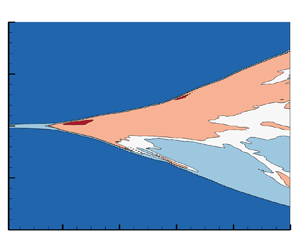No CrossRef data available.
Published online by Cambridge University Press: 23 December 2024

Turbulent mixing is a pivotal phenomenon in fusion research with profound implications for energy gain. A Reynolds-averaged Navier–Stokes model capable of predicting realistic mixing transition processes is of significant importance for fusion applications, yet such a model remains elusive. This work addresses the limitations of prevalent global transition criteria, proposing a new idea to quantify local transition characteristics based on the mixing state, recognizing its direct relevance to fusion reaction rates. We delve into the description and analysis of the spatiotemporal evolution of the mixing state and its interplay with the transition process. Then, a local transition indicator is developed and compared with conventional global criteria using the large-eddy simulation (LES) of Rayleigh–Taylor turbulent mixing. Building upon this foundation, we introduce a novel eddy viscosity model based on the local transition indicator. A posterior assessment using LES data validates that it significantly outperforms standard gradient transport models during the transition stage. Consequently, we integrate this new eddy viscosity model with the Besnard–Harlow–Rauenzahn model to construct a comprehensive transition model, which demonstrates reasonably good performance in comparison with LES results. This work paves the way for future research in developing advanced modelling strategies that can effectively address the complexities of transitional flows in fusion engineering applications.